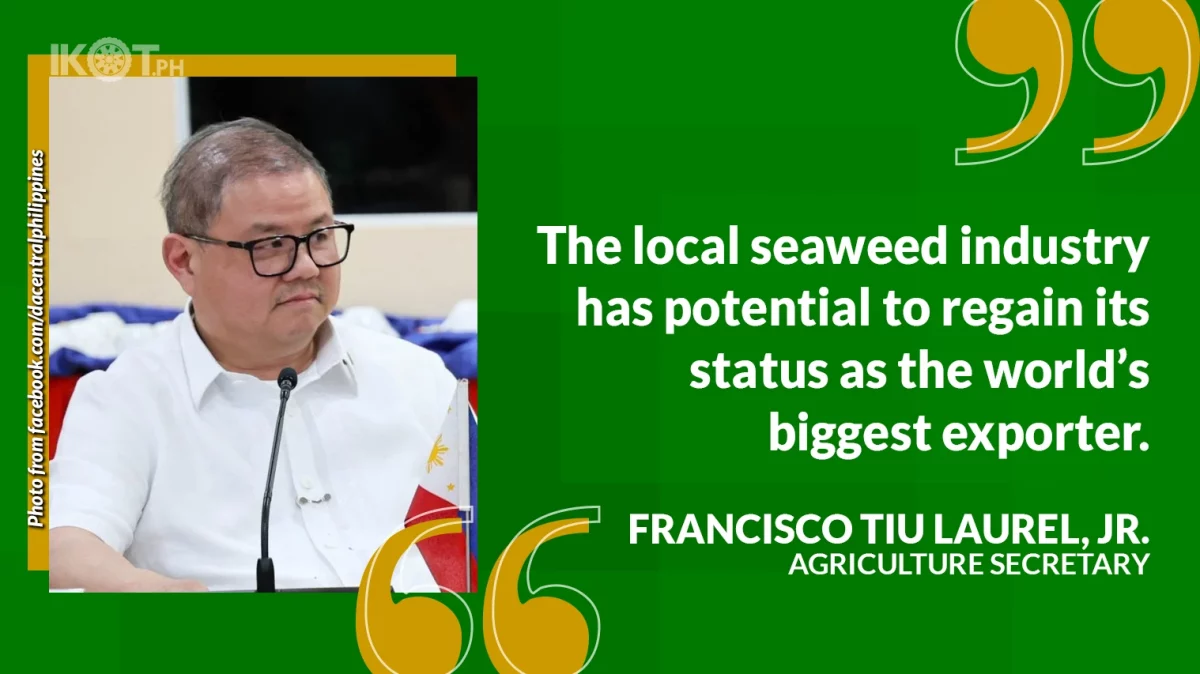The Department of Agriculture underscored the need to increase support for local seaweed producers to boost the potential of the second biggest export earner in Philippine aquaculture.
DA Secretary Francisco Tiu Laurel, Jr. pointed out the local seaweed industry’s potential to regain its status as the world’s biggest exporter.
“We really need to support the industry,” Tiu Laurel said at a recent gathering of seaweed industry stakeholders.
“Indonesia already surpassed our production…(but) we still have an unutilized area of 85,000 hectares. Until we reach that, we shouldn’t stop. If possible, we should accelerate the industry’s area expansion,” the agriculture chief added.
In 1990, the Philippines accounted for 80 percent of the world’s seaweed requirement while Indonesia only produced 10 percent. That has since changed. Indonesia produces five times more than the Philippines.
“Lack of seedlings, which could be addressed by having bigger tissue culture laboratories and more technicians.”
The agriculture head said major concerns raised by industry leaders is limited support for the industry and lack of seedlings, which could be addressed by having bigger tissue culture laboratories and more technicians. He said logistics issues also need to be resolved, including building more ports to take raw materials to processing plants and more power plants to address the high cost of power.
While most seaweed production comes from Mindanao, processing facilities are in Cebu and Manila. The seaweed industry earned around $250 million even during the pandemic and generated export sales of $350 million in 2022.
Tiu Laurel said the cost of logistics could be lowered if extra containers in Zamboanga are used more efficiently.
“There are a lot of dry containers in Zamboanga. I think we can solve the logistics issue there if we coordinate with other industries.”
“There are a lot of dry containers in Zamboanga. I think we can solve the logistics issue there if we coordinate with other industries. It’s a matter of convergence,” he added.
Tiu Laurel acknowledged the industry’s proposal to provide support in terms of seedlings, implements, lines, floaters, and counterweights to help seaweed farmers, who could produce 70,000 metric tons of seaweeds a year.
He said once dried, the seaweed harvest would generate around 10,000 tons every year worth P550 million—a good return for a total investment of P1 billion for the industry, including large tissue culture laboratories, dryers, warehouses and training more technicians.



